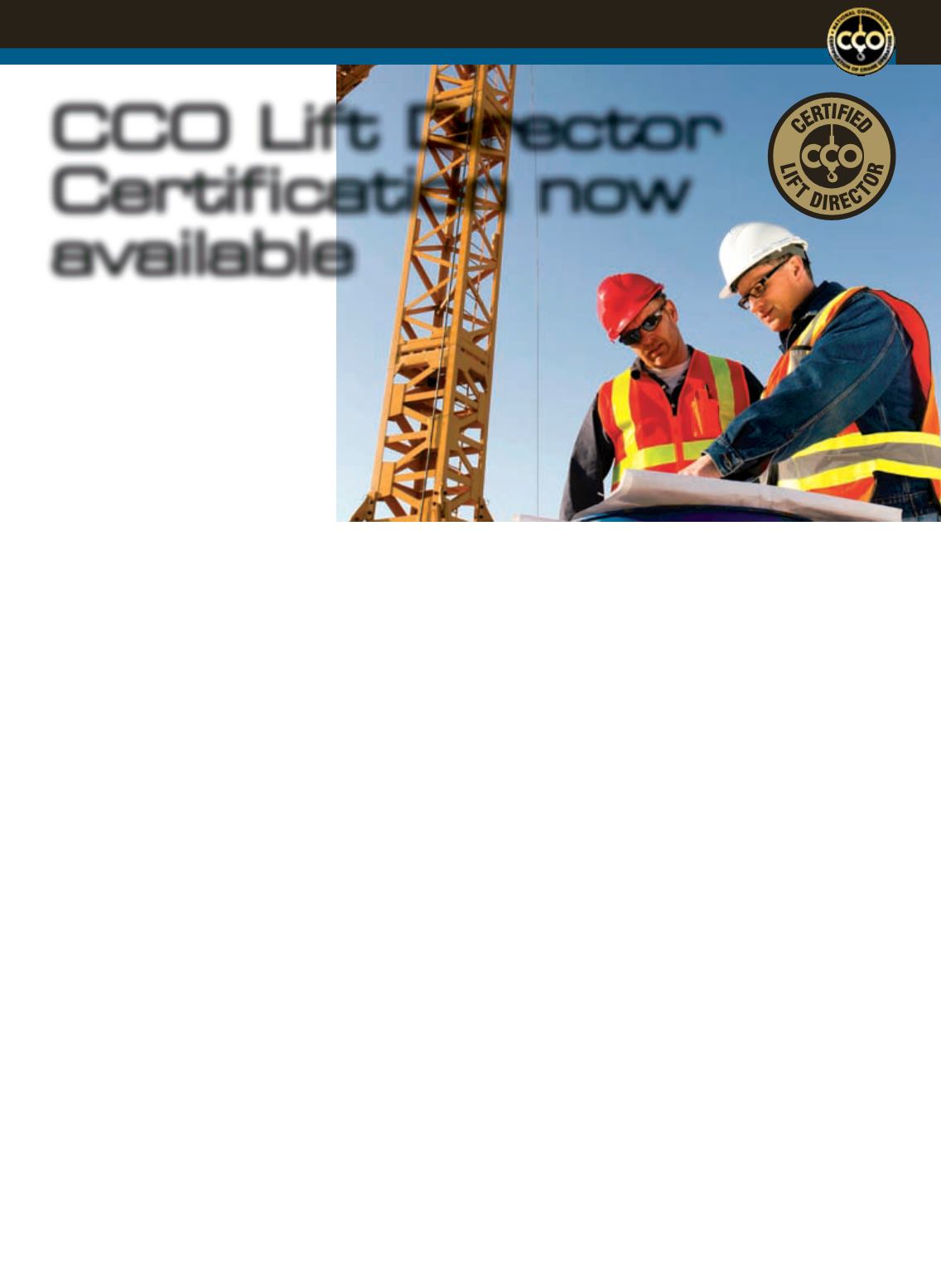
19
NCCCO NEWS
OCTOBER 2013
ACT
CCO Lift Director
Certification now
available
L
ift directors now have a means
of demonstrating knowledge
of their jobsite duties and
responsibilities, as well as their ability
to perform them, thanks to the latest
certification program from the National
Commission for the Certification of
Crane Operators (NCCCO).
Developed over the past year-and-
a-half by an 18-member Lift Director
Task Force made up of industry veterans
and subject-matter experts, as well as
psychometricians from International
Assessment Institute (IAI), this new
multidisciplinary certification has
been created in response to requests
from industry stakeholders, including
crane users, manufacturers, labor, and
insurance companies.
“Lift directors bring to the lift team a
wide range of career experiences and
have oversight of all lifting personnel,
so they play a critical role in safe lifting
operations,” said NCCCO Commissioner
and Chairman of the Lift Director
Task Force, William “Hank” Dutton,
Technical Services Senior Specialist with
Construction Risk Control at Travelers
Insurance. “This new Lift Director
certification is a logical progression of
NCCCO’s efforts to ‘close the loop’ on
crane and lifting safety.”
Fully ASME, OSHA compliant
The new program is fully compliant with
the new OSHA crane rule, Subpart CC,
as well as the ANSI standard that governs
crane operations. ASME B30.5 defines a
lift director as the person who “directly
oversees the work being performed by a
crane and the associated rigging crew.” As
a result, lift directors must know about
all of the technical aspects and personnel
roles involved with lifting operations. This
can range from ensuring adequate ground
conditions to managing communications
among lift team members, to
orchestrating complex, multi-crane lifts.
Lift directors are also responsible for
stopping crane operations if alerted
to an unsafe condition and restricting
unauthorized access to the crane’s work
area. Other duties include prohibiting
crane operations near power lines unless
OSHA and ASME guidelines have been
met, informing the operator of the weight
of loads, and ensuring that the load is
properly rigged.
“This new certification is designed to
be a powerful third party assessment tool
for an employer in determining that the
person that he has designated to direct
lifting operations has been evaluated as
to their knowledge and ability to perform
these tasks competently,” noted Joel
Oliva, NCCCO Manager for Program
Development and Administration.
The CCO Lift Director certification
program provides separate designations
for mobile crane and tower crane
operations. The exams consist of a
common written core examination and
different written specialty examinations
for each of the two designations. While
there is no formal practical exam, real-life
lift plans are used on the written exams to
test a lift director’s ability to read, review,
understand, and modify plans as changes
occur, similar to what they must do in the
real world.
Safety and cost benefits
Each candidate must also successfully
pass the respective crane operator written
exam(s) and the Rigger Level II written
exam; operators and Level II riggers who
are currently certified need only maintain
their certification status in good standing.
As with other CCO programs, the initial
certification period is for five years, after
which lift directors must recertify.
“The new CCO Lift Director
certification has been created to be
valid, reliable, and legally defensible,”
noted NCCCO Commission Chairman
Ellis Vliet. Once enough data has been
collected NCCCO will seek ANSI/
ISO accreditation as with other CCO
certifications, he added.
“Accreditation from a national personnel
certification accreditation body such as
the American National Standards Institute
(ANSI) is an indicator of a level of quality
that is simply not available from every
testing program that aspires to ‘certify’
individuals.” he said. As with existing
NCCCO programs, Vliet added, the new
lift director certification will meet all
prevailing ANSI and OSHA standards.
“We expect that this new lift director
certification will be popular with owners
and employers who understand the safety
and cost benefits of a professionally
developed assessment process and
who recognize its place within a
comprehensive risk management process,”
said NCCCO Executive Director,
Graham Brent.
For more information about the new
Lift Director certification program –
including a candidate handbook, exam
applications, and reference materials –
visit the Lift Director area of the NCCCO
website at
.
■
The CCO Certified Lift Director program is a powerful tool for determining that the person
designated to direct lifting operations has been evaluated as to their knowledge and ability


